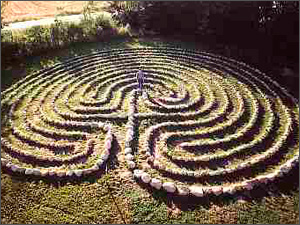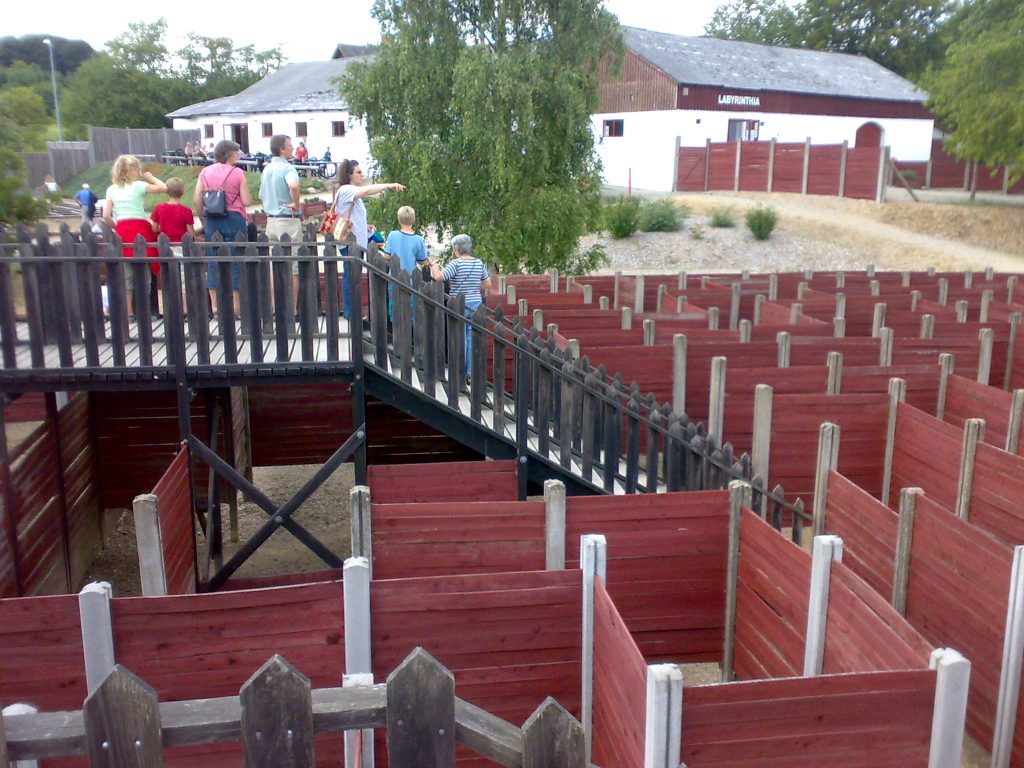Labyrinths & Mazes in General
Labyrinths & Mazes in General
– History & Use
Humans have always been fascinated by labyrinths and mazes. For thousands of years, the labyrinth has symbolized man’s way in life in the European culture, and people have tried to extort the solution from it at all times. The people of the Antiquity searched for the definitive truth, the people of the Middle Ages were seeking eternal salvation, and people of today want to find their own “ego”. To them all the path seems to go through a maze.
Mentioning the word maze, most people think of complicated pathways where you get lost. However, there are other types of mazes, where you don’t lose your way.
Labyrinths and mazes can be of many different kinds, occur in many ways and be made of various kinds of materials.
Labyrinths and mazes are found in many cultures and in many countries.
The earliest type of labyrinth was laid in stone as far back as in the Bronze Age.
The next type was the church labyrinths, laid in flagstones into the church floors during the Middle Ages in the 13th century. In Denmark, this type was made as frescos in the 15th century.
The third type is the hedge mazes laid out in the castle and manor house parks in the 15th to 17th centuries. Today, there are many other types, e.g. mazes with certain rules to be followed in order to solve the puzzle of the maze.

To get lost or not
We distinguish between two types of mazes: Labyrinths are unicursal (one path) and mazes are multicursal (many paths).
Labyrinths (unicursal = one path):
The earliest types of labyrinths. There are two distinctive basic types (according to pattern): One is the stone-lined Trojaborg-type and the other is the Chartres type. Many labyrinth ground plans are based on one of these two types. Common to these two types is that when you have reached the goal in the centre you have been through all the paths. There are no dead ends. You are led all the way in and out so to speak. The system seems harmonious. It is one continuous pathway.
Click here, if you would like to read more about the ancient Trojaborg labyrinths from the Bronze Age.
Click here, if you would like to read more about the Chartres labyrinth and other church labyrinths in France.
Click here, if you would like to read more about labyrinths in Danish churches (in terms of Frescos).
Mazes (multicursal = many paths):
The exact opposite applies to mazes, like e.g. the hedge mazes, where you may lose your way, because there are dead ends. There are alternative paths all the time. You are constantly faced with decisions such as: Where is the right way to the goal?
At Labyrinthia you will find both modern (multicursal) mazes and historic (unicursal) labyrinths.
- You decide and walk at your own pace; and you do not have to queue up to have fun.
- It’s great fun, for children and adults alike.


















